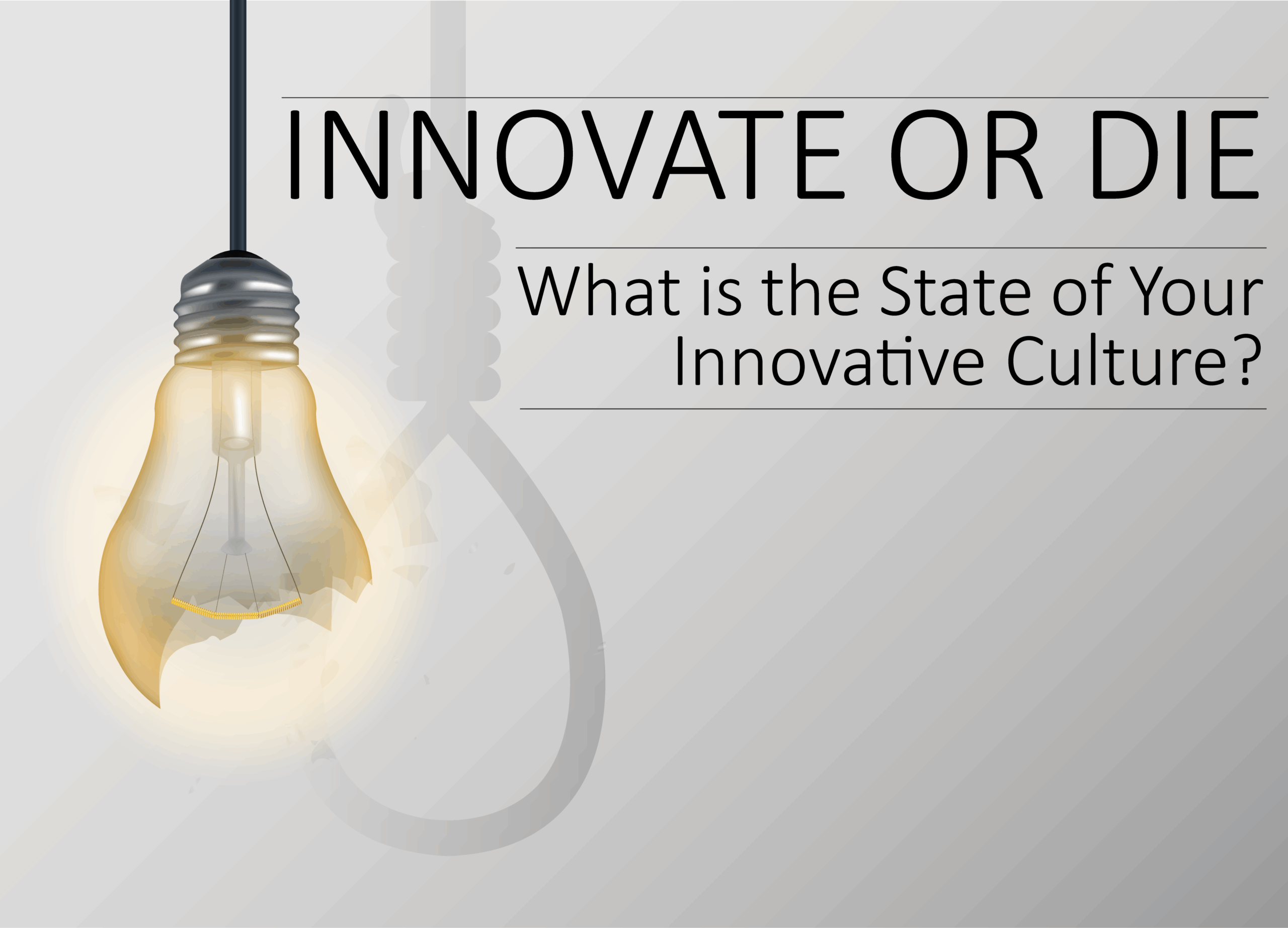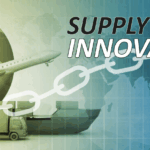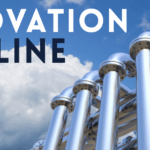[vc_row][vc_column][vc_column_text css=””]
What Do Today’s Employees and Leaders Want From an Innovative Culture?
Interestingly enough, when you ask managers and employees from organizations around the world about the kind of workplace culture they want, the answer is almost always the same: they want to be part of an environment where innovation isn’t just encouraged, but actually expected. It makes sense—people gravitate toward dynamic workplaces where creative thinking leads to new possibilities and where pushing boundaries is part of the daily routine.
Participants in global seminars and internal team meetings alike consistently describe their ideal innovative workplace with a familiar set of attributes. These typically include:
- A genuine tolerance for mistakes—a recognition that failures are stepping stones to real progress
- Permission and freedom to experiment, test new ideas, and “fail fast, learn faster”
- A sense of psychological safety, where taking risks doesn’t mean risking one’s job or reputation
- Open and active collaboration across departments and levels—silos are broken down in favor of teamwork and diverse perspectives
- A flat or less rigid hierarchy, where the best ideas can come from anyone, not just the C-suite
It’s easy to see why this kind of culture is so appealing. People want to work in organizations that truly support growth, learning, and fearless creativity—places where the next big breakthrough feels just around the corner.[/vc_column_text][vc_column_text css=””]
Hallmarks of an Innovative Culture
So, what defines an innovative culture—at least according to the experts? Both management literature and business leaders tend to agree on several key qualities that set truly innovative organizations apart. Common threads include an acceptance that missteps and failures are part of the process, a hunger to experiment and explore new ideas, and an unwavering commitment to creating an atmosphere where people feel safe sharing those ideas without fear of being shot down.
You’ll also find that these environments champion collaboration over competition and flatten out traditional hierarchies—think less about rigid ladders and more about a roundtable of minds eager to build off each other’s energy. Encouraging open dialogue, embracing diverse perspectives, and empowering teams to take risks aren’t just passing fads—they’re the everyday realities of companies determined to stay relevant and resilient in a world of constant change.[/vc_column_text][vc_column_text css=””]If there are any remaining questions about the importance of innovation in today’s business world, all you have to do is look to the recent closing of the giant Toys “R” Us as a stark reminder of what happens when companies fail to innovate. While Toys “R” Us is the most recent fatality, they are by no means alone. Consider this: “only 12 percent of the Fortune 500 companies from 1955 are still in business, and last year alone, 26 percent fell off the list.” If you have left innovation to happenstance or your innovation programs aren’t performing as expected, it is time to ask some tough questions about your innovation culture.
Why Innovative Culture Matters
A culture conducive to innovation isn’t just a driver of the bottom line—it’s something both leaders and employees genuinely value. Ask just about any manager if they’d prefer to work in an organization where innovative behaviors are the norm, and you’ll be hard-pressed to find someone who says “No, I don’t.” Who could blame them? Innovative cultures are often depicted as dynamic, collaborative, and fun places to work. When people are asked to describe such cultures, they consistently point to the same characteristics celebrated in countless management books: tolerance for failure, willingness to experiment, psychological safety, high collaboration, and nonhierarchical structures. These aren’t just buzzwords—research supports that these very behaviors translate into better innovative performance.
Being able to take a step back and evaluate the state of your innovation culture begins with fostering an understanding of the current moment in business history and why fostering innovation can be challenging. There is no denying that we have arrived at a unique moment where “Organizations face a radically shifting context for the workforce, the workplace, and the world of work.” Innovation means understanding these shifts and facing them head on.
The State of Our Modern Workforce
//ezassi.com/wp-content/uploads/2018/04/organizations-face-quote-2.png
The main catalyst for the seismic shifts that have been rocking the workforce is technology. We are experiencing a fourth industrial revolution that sees technology growing at a pace of 100% every 12-18 months. That is a break-neck pace that can seem impossible to keep up with let alone get ahead of. The result is a sizeable and ever-growing gap between technology and business productivity. Essentially, humans are struggling to adapt quickly to new technology and the further behind the curve companies fall, the more likely they are to lose out to competition that is able to remain more flexible and quickly onboard the latest technology.
Morphing into a company with a workforce that can make the most of technology and maintain productivity requires a culture of innovation that willingly lets go of rigid systems, procedures, and hierarchies. This shift clearly falls under the umbrella of human resources, making HR departments a vital component of creating a culture of innovation. With the right HR leadership, companies can create an environment that actively works to close the gap between technology and productivity.
What Defines an Innovative Culture?
Let’s break down what an innovative culture actually looks like in practice:
- Tolerance for Failure: Employees feel empowered to try new things, take calculated risks, and learn from missteps without fear of punishment.
- Willingness to Experiment: People are encouraged to test new ideas, processes, and products—even if it means deviating from the “way it’s always been done.”
- Psychological Safety: Everyone feels safe voicing new ideas, challenging the status quo, and participating fully regardless of their role.
- Collaboration Across Boundaries: Silos get broken down. Teams work together, share insights, and problem-solve collectively.
- Nonhierarchical Structure: Good ideas are welcomed from anywhere in the organization, not just the top.
These characteristics are not just aspirational—they’re essential to surviving and thriving in today’s landscape.
How Can HR Help?
When it comes to creating an innovative culture, there are some very specific steps that HR departments can take:
- Stay on top of technology trends. Workers are busy with daily tasks, but with the right support, everyone can be aware of emerging trends and take the necessary steps to respond appropriately.
- Understand how new technology is relevant to the business and how it can be incorporated in order to enhance the workforce and improve productivity.
- Work to get leaders and key stakeholders onboard when it comes to adapting new technology. It is up to HR to make the case for the importance of innovation and sell decisionmakers on new technology.
- Provide the necessary support and education that allows workers to adopt new technology.
- Create an environment where collaboration is not only encouraged and made easy but rewarded.
- Recognize participation and reward employees for their contributions.
Creating a culture where employees feel safe to innovate and are able to pursue new ideas that may go beyond their existing roles will always be easier said than done, but there are some valuable tools that HR can use to achieve success. Innovation software provides a concrete way for employees to participate in innovation, actively collaborate with colleagues and experts from around the world, and receive feedback and recognition for their ideas. By creating a centralized location for innovation that can be customized according to the company and the project, innovation software can effectively support efforts by HR departments.
The phrase “innovate or die” takes on increasing weight as technology accelerates the pace of innovation. At the same time, the rate at which technology is advancing makes it nearly impossible to adapt and maintain productivity at a competitive level. Recognizing this challenge is the first step to overcoming it. From there, it is important to enlist HR departments to identify new trends, support ongoing education, incorporate innovation software, and serve as a leader in cultivating an environment that supports innovation. If your innovation culture isn’t what it should be, then it may be time to turn to HR.[/vc_column_text][vc_empty_space height=”40px”][vc_column_text css=””]If there are any remaining questions about the importance of innovation in today’s business world, all you have to do is look to the recent closing of the giant Toys “R” Us as a stark reminder of what happens when companies fail to innovate. While Toys “R” Us is the most recent fatality, they are by no means alone. Consider this: “only 12 percent of the Fortune 500 companies from 1955 are still in business, and last year alone, 26 percent fell off the list.” If you have left innovation to happenstance or your innovation programs aren’t performing as expected, it is time to ask some tough questions about your innovation culture.
Why Innovative Culture Matters
A culture conducive to innovation isn’t just a driver of the bottom line—it’s something both leaders and employees genuinely value. Ask just about any manager if they’d prefer to work in an organization where innovative behaviors are the norm, and you’ll be hard-pressed to find someone who says “No, I don’t.” Who could blame them? Innovative cultures are often depicted as dynamic, collaborative, and fun places to work. When people are asked to describe such cultures, they consistently point to the same characteristics celebrated in countless management books: tolerance for failure, willingness to experiment, psychological safety, high collaboration, and nonhierarchical structures. These aren’t just buzzwords—research supports that these very behaviors translate into better innovative performance.
Being able to take a step back and evaluate the state of your innovation culture begins with fostering an understanding of the current moment in business history and why fostering innovation can be challenging. There is no denying that we have arrived at a unique moment where “Organizations face a radically shifting context for the workforce, the workplace, and the world of work.” Innovation means understanding these shifts and facing them head on.
The State of Our Modern Workforce
//ezassi.com/wp-content/uploads/2018/04/organizations-face-quote-2.png
The main catalyst for the seismic shifts that have been rocking the workforce is technology. We are experiencing a fourth industrial revolution that sees technology growing at a pace of 100% every 12-18 months. That is a break-neck pace that can seem impossible to keep up with let alone get ahead of. The result is a sizeable and ever-growing gap between technology and business productivity. Essentially, humans are struggling to adapt quickly to new technology and the further behind the curve companies fall, the more likely they are to lose out to competition that is able to remain more flexible and quickly onboard the latest technology.
Morphing into a company with a workforce that can make the most of technology and maintain productivity requires a culture of innovation that willingly lets go of rigid systems, procedures, and hierarchies. This shift clearly falls under the umbrella of human resources, making HR departments a vital component of creating a culture of innovation. With the right HR leadership, companies can create an environment that actively works to close the gap between technology and productivity.
What Defines an Innovative Culture?
Let’s break down what an innovative culture actually looks like in practice:
- Tolerance for Failure: Employees feel empowered to try new things, take calculated risks, and learn from missteps without fear of punishment.
- Willingness to Experiment: People are encouraged to test new ideas, processes, and products—even if it means deviating from the “way it’s always been done.”
- Psychological Safety: Everyone feels safe voicing new ideas, challenging the status quo, and participating fully regardless of their role.
- Collaboration Across Boundaries: Silos get broken down. Teams work together, share insights, and problem-solve collectively.
- Nonhierarchical Structure: Good ideas are welcomed from anywhere in the organization, not just the top.
These characteristics are not just aspirational—they’re essential to surviving and thriving in today’s landscape.
How Can HR Help?
When it comes to creating an innovative culture, there are some very specific steps that HR departments can take:
- Stay on top of technology trends. Workers are busy with daily tasks, but with the right support, everyone can be aware of emerging trends and take the necessary steps to respond appropriately.
- Understand how new technology is relevant to the business and how it can be incorporated in order to enhance the workforce and improve productivity.
- Work to get leaders and key stakeholders onboard when it comes to adapting new technology. It is up to HR to make the case for the importance of innovation and sell decisionmakers on new technology.
- Provide the necessary support and education that allows workers to adopt new technology.
- Create an environment where collaboration is not only encouraged and made easy but rewarded.
- Recognize participation and reward employees for their contributions.
Creating a culture where employees feel safe to innovate and are able to pursue new ideas that may go beyond their existing roles will always be easier said than done, but there are some valuable tools that HR can use to achieve success. Innovation software provides a concrete way for employees to participate in innovation, actively collaborate with colleagues and experts from around the world, and receive feedback and recognition for their ideas. By creating a centralized location for innovation that can be customized according to the company and the project, innovation software can effectively support efforts by HR departments.
The phrase “innovate or die” takes on increasing weight as technology accelerates the pace of innovation. At the same time, the rate at which technology is advancing makes it nearly impossible to adapt and maintain productivity at a competitive level. Recognizing this challenge is the first step to overcoming it. From there, it is important to enlist HR departments to identify new trends, support ongoing education, incorporate innovation software, and serve as a leader in cultivating an environment that supports innovation. If your innovation culture isn’t what it should be, then it may be time to turn to HR.[/vc_column_text][vc_empty_space height=”45px”][vc_column_text]
How Can HR Help?
[/vc_column_text][vc_column_text]When it comes to create an innovative culture, there are some very specific steps that HR departments can take:[/vc_column_text][vc_column_text css=””]When it comes to creating an innovative culture, there are some very specific steps that HR departments can take:
- Stay on top of technology trends. Workers are busy with daily tasks, but with the right support, everyone can be aware of emerging trends and take the necessary steps to respond appropriately.
- Understand how new technology is relevant to the business and how it can be incorporated in order to enhance the workforce and improve productivity.
- Work to get leaders and key stakeholders onboard when it comes to adapting new technology. It is up to HR to make the case for the importance of innovation and sell decisionmakers on new technology.
- Provide the necessary support and education that allows workers to adopt new technology.
- Create an environment where collaboration is not only encouraged and made easy but rewarded.
- Recognize participation and reward employees for their contributions.
But fostering innovation goes beyond simply checking items off a list. The most successful innovation cultures share a handful of defining characteristics—ones that HR can actively cultivate:
- Tolerance for failure. Innovation is inherently risky, and not every new idea will be a winner. HR can help create an atmosphere where employees feel safe to experiment, learn from mistakes, and try again without fear of reprisal.
- Willingness to experiment. A truly innovative workplace is one where employees are encouraged to test new ideas, processes, or products—even if the outcome isn’t guaranteed.
- Psychological safety. People need to feel comfortable speaking up, sharing unconventional ideas, and challenging the status quo. HR can nurture this safety by promoting open communication and inclusive practices.
- High collaboration. Innovation thrives when expertise is shared and teams work across silos. HR can break down barriers and build bridges, making collaboration the norm rather than the exception.
- Nonhierarchical structure. Flatter organizations empower employees at every level to contribute ideas and take initiative, rather than waiting for direction from the top.
Creating a culture where employees feel safe to innovate and are able to pursue new ideas that may go beyond their existing roles will always be easier said than done, but there are some valuable tools that HR can use to achieve success. Innovation software provides a concrete way for employees to participate in innovation, actively collaborate with colleagues and experts from around the world and receive feedback and recognition for their ideas. By creating a centralized location for innovation that can be customized according to the company and the project, innovation software can effectively support efforts by HR departments.
By intentionally building these qualities into the fabric of your organization, HR can help bridge the gap between technology and productivity—turning the daunting pace of change into an opportunity for growth and competitive advantage.[/vc_column_text][vc_empty_space height=”15px”][vc_column_text]
Creating a culture where employees feel safe to innovate and are able to pursue new ideas that may go beyond their existing roles will always be easier said than done, but there are some valuable tools that HR can use to achieve success. Innovation software provides a concrete way for employees to participate in innovation, actively collaborate with colleagues and experts from around the world and receive feedback and recognition for their ideas. By creating a centralized location for innovation that can be customized according to the company and the project, innovation software can effectively support efforts by HR departments.
The phrase “innovate or die” takes on increasing weight as technology accelerates the pace of innovation. At the same time, the rate at which technology is advancing makes it nearly impossible to adapt and maintain productivity at a competitive level. Recognizing this challenging is the first step to overcoming it. From there, it is important to enlist HR departments to identify new trends, support ongoing education, incorporate innovation software and serve as a leader in cultivating an environment that supports innovation. If your innovation culture isn’t what it should be, then it may be time to turn to HR.[/vc_column_text][/vc_column][/vc_row]






